20 February 2023
It was early in my childhood in Mississippi when I realized you marked the seasons with vegetation and not temperature. It only takes one 80+°F temperature on Christmas Day to understand temperature isn’t the best demarcation, especially when the year before there was snow on the ground.
The first sign of spring I remember as a child was daffodils (Narcissus sp.) poking their shoots up above the ground, even when there was still frosty mornings. My Grandmother Agnew (Ruby) had a row of them that demarcated the back yard from the vegetable garden.
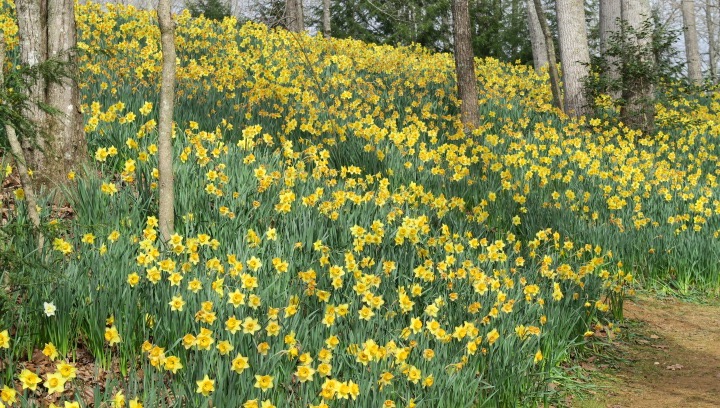
Later, I learned to recognize redbuds (Cercis canadensis) as a harbinger.
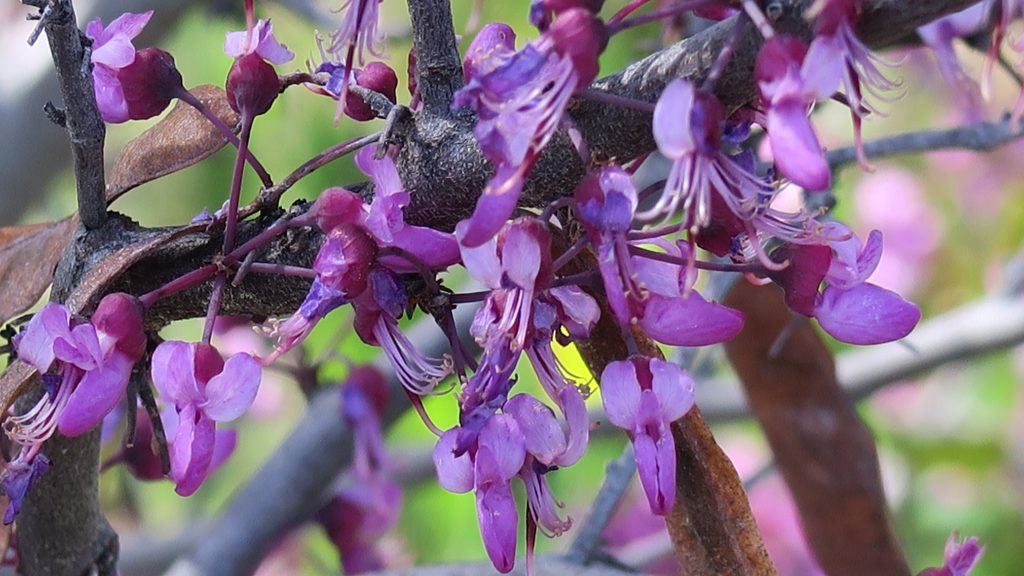
You could find redbuds in the deep, moist woods and they were very common at Roosevelt State Park near Morton, MS. Soon after came the dogwood blooms (Cornus florida) and I remember my grandmother Ruby always wanting to go out to the park to see the dogwoods in bloom.
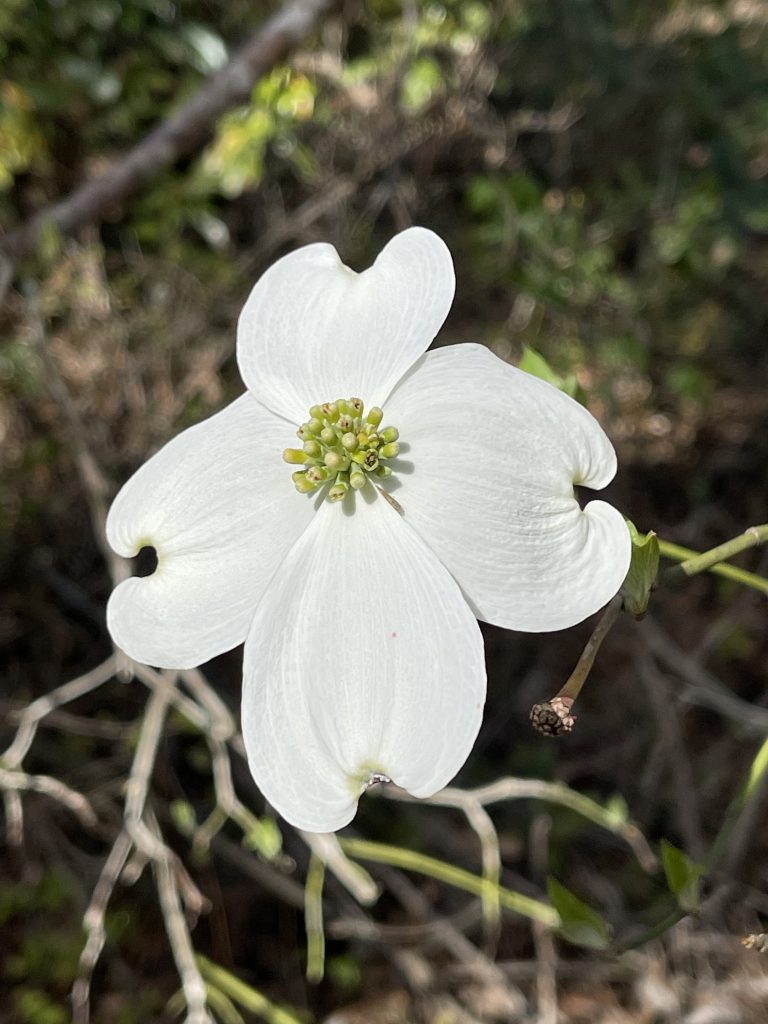
I always associate summer with the begonias my Grandmother Searcy had growing in enameled pails (not pots) hanging from hooks along the eaves of the porch next to the kitchen. You also knew it was full summer when Granddaddy Searcy started pulling watermelons from the garden and placing them in the dogtrot of the house outside of Pulaski, MS.
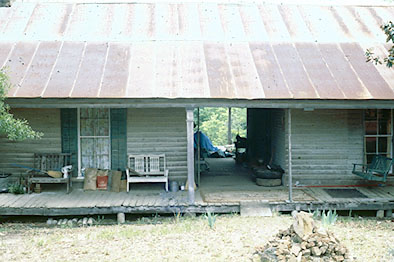
They never really got cold on the dogtrot but if he knew the grandkids were coming, he would often lower one into the well to “chill.” Summer to me was sitting on the back steps of the “old place” and spitting watermelon seeds in a contest with my brother and cousins. I admit to being somewhat of a prodigy with my technique and distance in comparison with some of my older kin.
My Grandmother Ruby suffered terribly from hay fever in the fall and she blamed it on goldenrods, genus Solidago (a common perception back then) and would have me go through her back yard pulling any that dared rear their heads (okay, technically panicles of flowers).
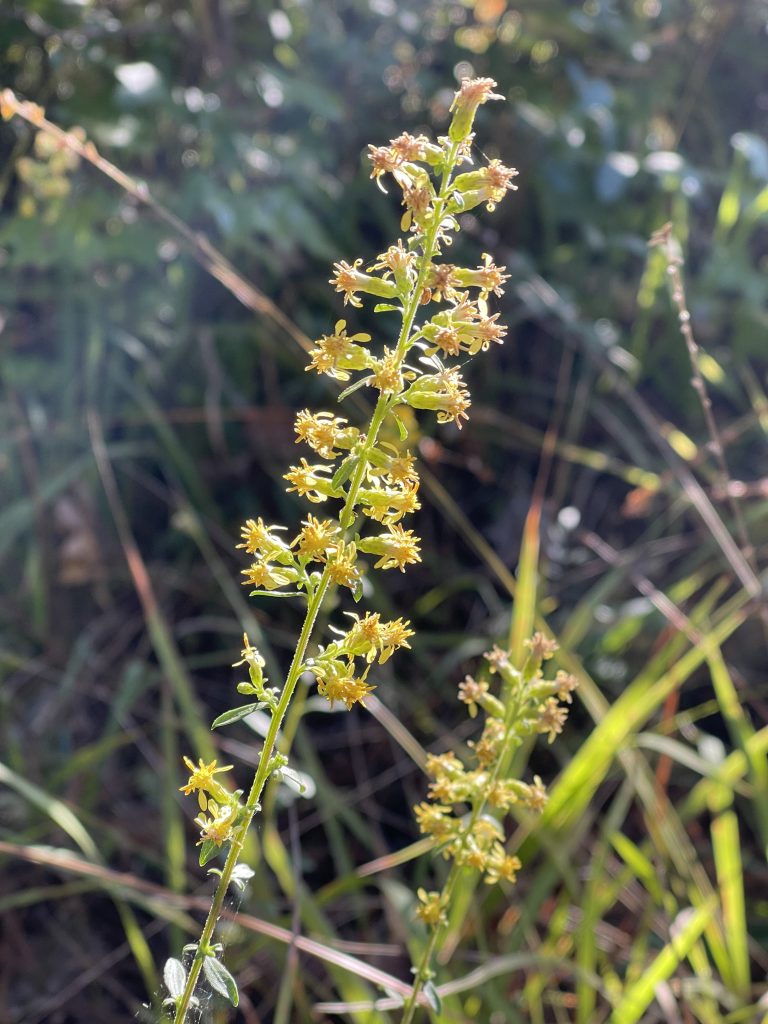
Only later did I learn that her allergy was actually due ragweed pollen, particularly from the species Ambrosia artemisifolia which grew abundantly in her back yard ditch and garden. She didn’t have me pull those.
As a Boy Scout, I learned the sign of fall was when the Tupelo gum leaves (Nyssa sylvatica) turned red. I haven’t found another plant that the leaves change color any earlier than the Tupelo gum. As you might guess, there wasn’t much going on in winter as far as plants are concerned.
Any way, in that spirit, I’m proud to announce it is spring in south Florida! Although it is 57°F in Greensboro, NC, 45°F in Jackson, MS, 54° in San Antonio, TX, 40°F in Edgewood, NM and 22°F in Yellowstone but its 84°F in Fort Lauderdale.
I know it’s spring here because the yellow tab trees are in bloom.
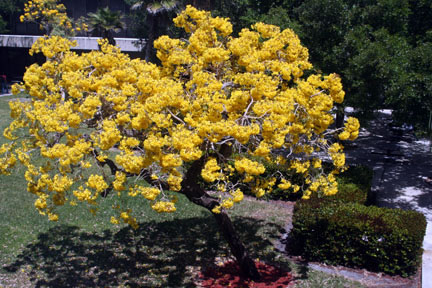
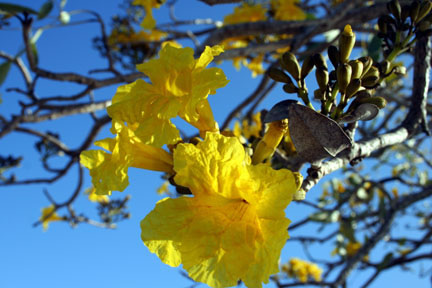
They are pretty much the harbinger of spring in a subtropical climate.
Not only that, but the mangoes are in bloom!
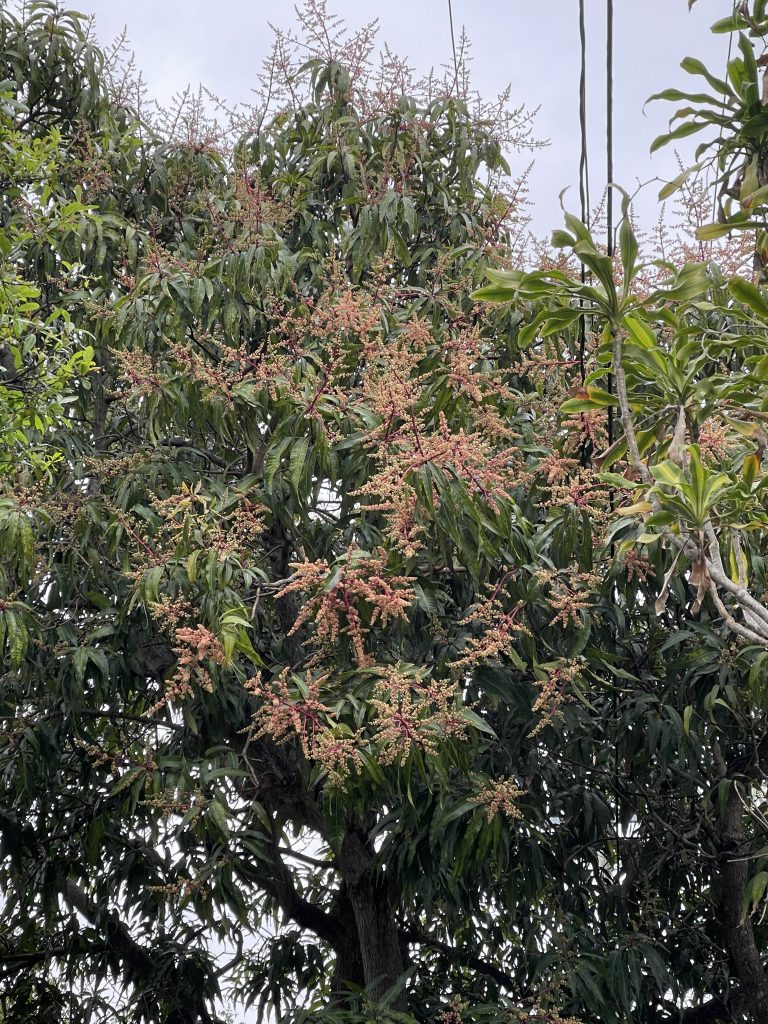
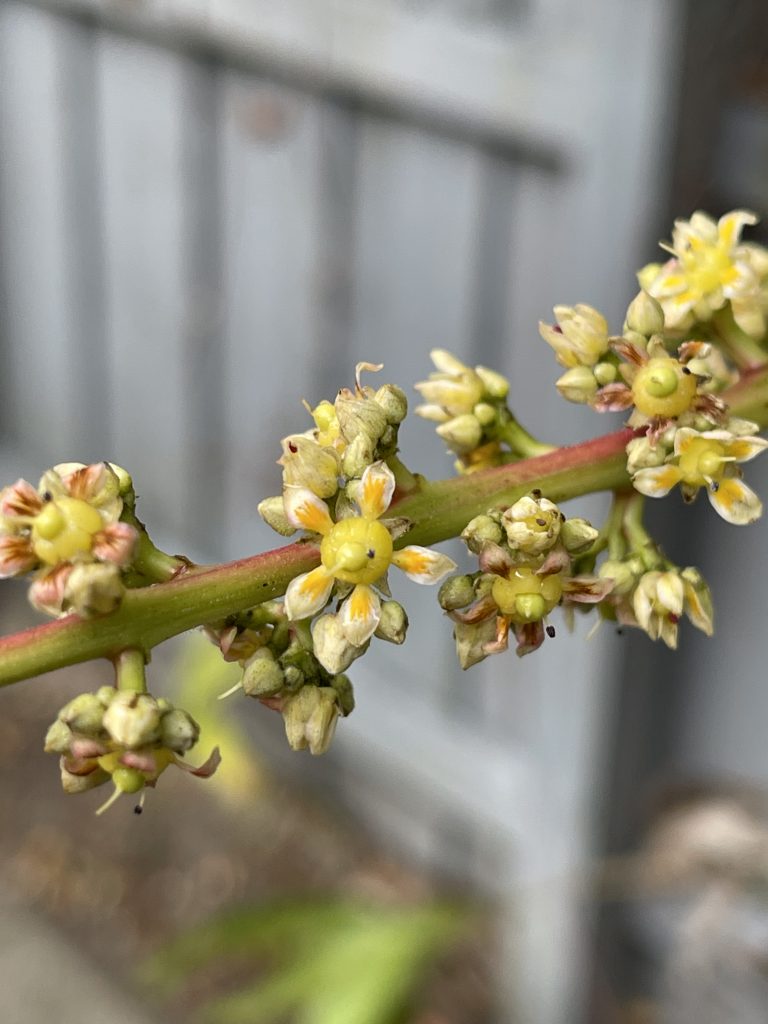
Mangoes have an extended blooming period, some very early in spring like the one that hangs over into my yard and then some bloom in late spring to early summer. Tab trees are pretty much the first blooms of spring down here.
When I moved to south Florida in 1985, I missed observing the changes in seasons. At first glance we only get two seasons and it took me a while to discern our “winter” and “fall” seasons.
You have to be careful about trees shedding their leaves as a sign of “fall” in Florida. In subtropical climates, it’s not a sign of fall but probably spring. For example, the pongam tree (Pongamia pinnata) sheds its leaves in spring and then immediately blooms.
My grandmother Searcy not only grew begonias but she also had spirea in the yard that was also a spring bloomer. Right at the edge of the kitchen porch, on the ground, was a wisteria vine that produced purple flowers early in summer. On a warm summer night, you can’t beat the smell of wisteria wafting on the breeze.
My Dad taught me to make hot seed beds for garden plants like tomatoes. You generally planted tomato seeds indoors in trays and when they sprouted and got a certain size, you moved the young plants into a hot bed (a covered bed) outside to adjust them to the cold temperatures still around. After the last frost (based on an almanac) you then transplanted the hardier plants to their spot in the garden.
Dad, his Dad, and I suppose his Grandad all planted by the Old Famer’s Almanac. It had calendars with phases of the moon and listed on the calendar the best times to plant tomatoes, cucumbers, watermelons, corn, peas, beans, etc. My Dad believed in the almanac and he often wrote on a regular calendar the almanac weather prediction for the day to see if it matched reality. It did more times than it didn’t.
I used to tell my students about when the Old Famer’s Almanac predicted snow in July in the U.S. . It was in 1816 and the almanac had a misprint and predicted rain, hail and snow for that month. It did snow in July in most of New England. It turned into the year of no summer due to the eruption of Mount Tambora in the East Indies (Indonesia). That pretty much made the reputation of Old Farmer’s Almanac and people have been planting crops based on the information within since.
I first learned plants from my grandparents, my parents, and other close relatives. Later, Boy Scouts taught me more and then I concentrated in botany in graduate school. I still tell seasons by the plants – even in subtropical Florida.

I enjoyed this. In Greensboro, NC, the daffodils have been blooming for about a week. The cherry trees and Japanese magnolias are blooming. Maybe spring is here.